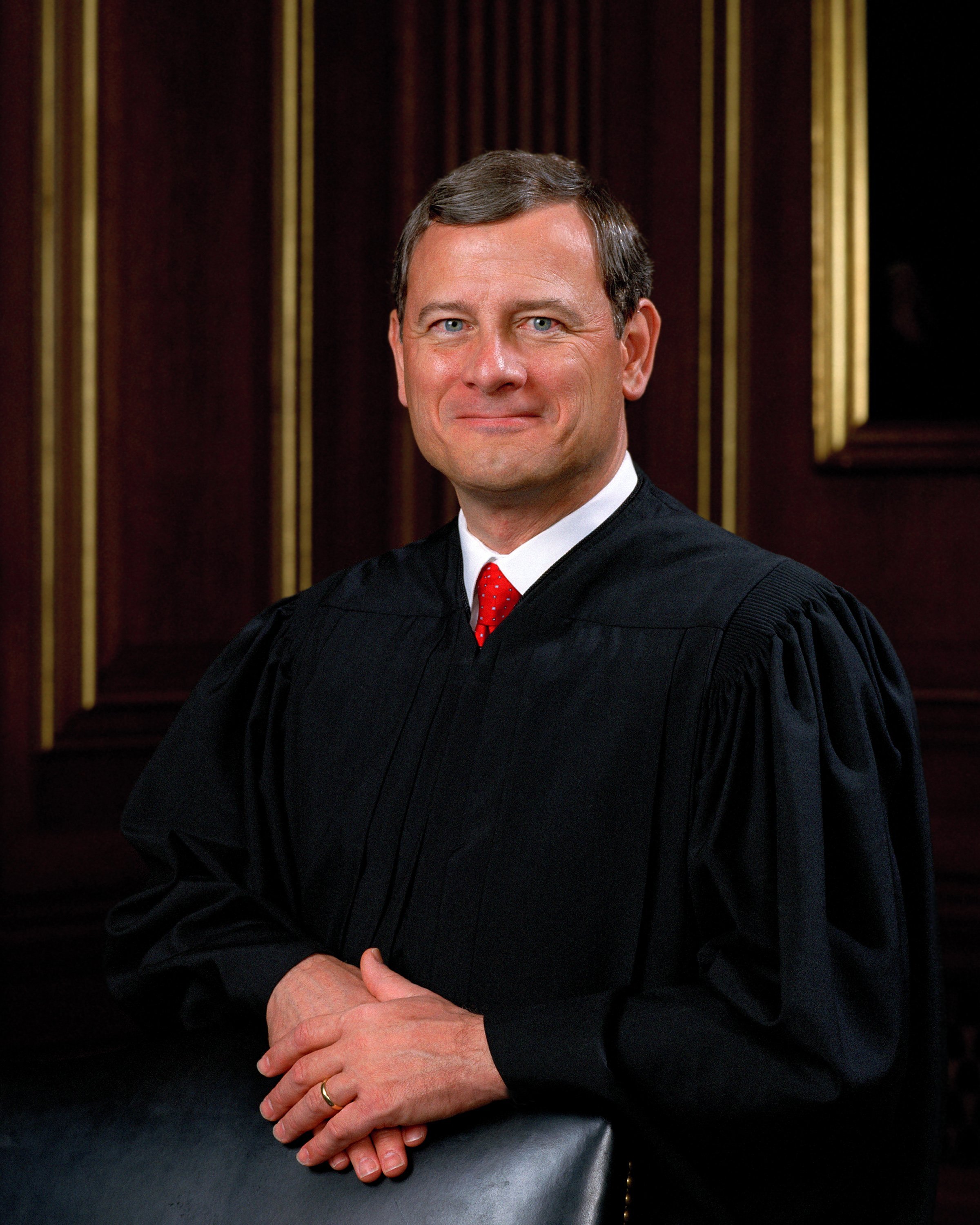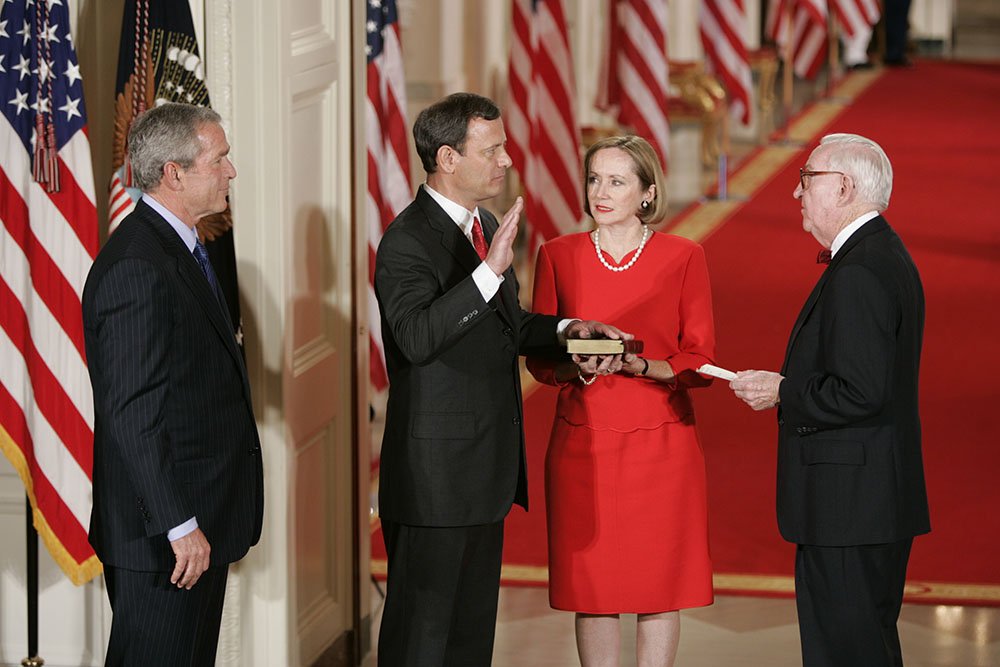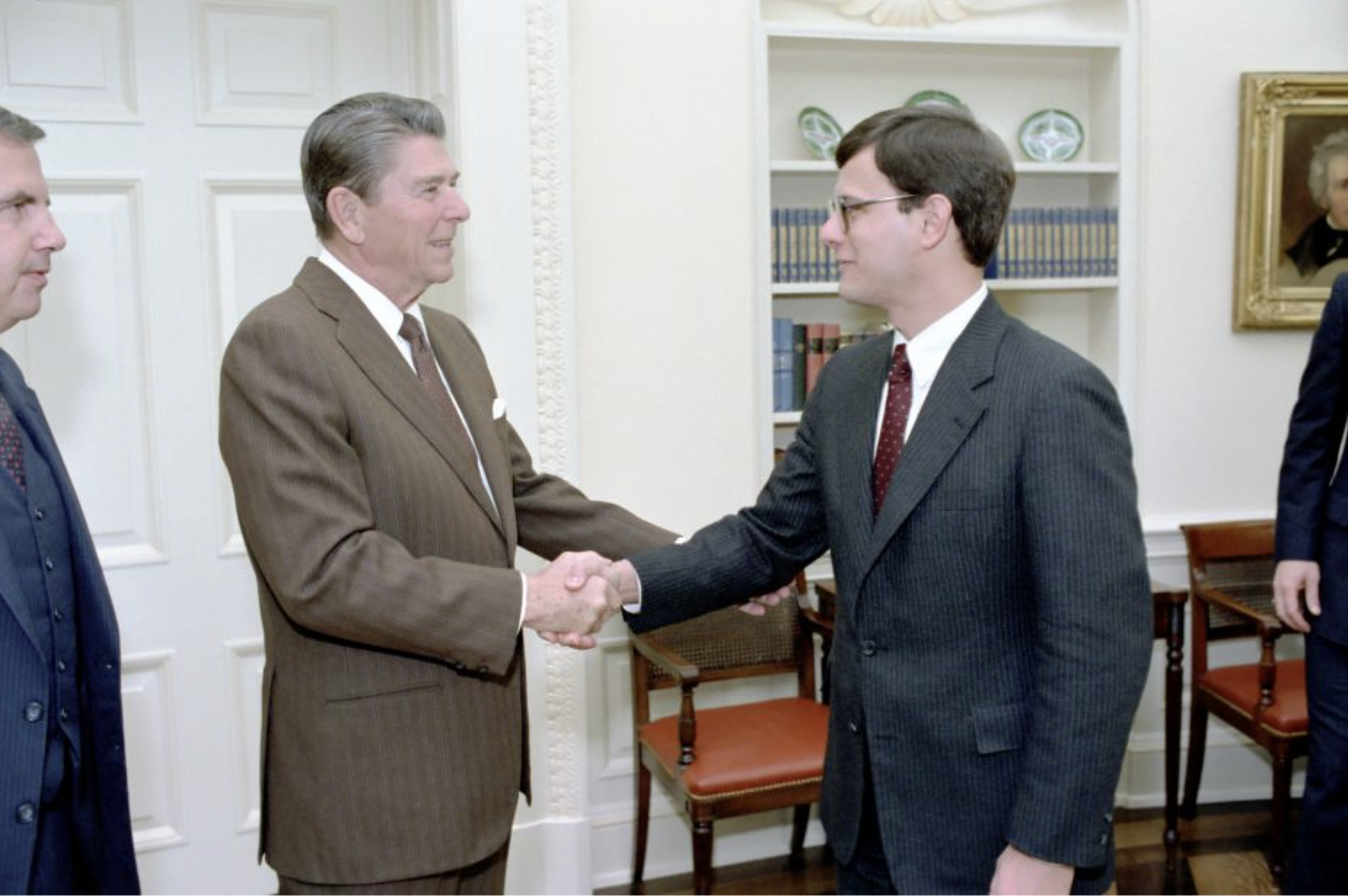Credit: Fred Schilling
JOHN ROBERTS
Chief Justice
Appointed by: George Bush
Sworn in: September 29, 2005
Preceded by: William Rehnquist
2005 — Present
Credit: The White House
Personal Life and Education
Chief Justice John Roberts was born on January 27, 1955, in Buffalo, New York. When he was ten, his family moved to Indiana, where his father worked as an engineer for Bethlehem Steel. Roberts attended La Lumiere School, a Roman Catholic boarding school, where he excelled academically and and was a part of the choir, drama, and newspaper clubs. Roberts was also a member of his school’s track and field team, the captain of the football team, and a regional champion in wrestling. Roberts graduated in 1973 as the valedictorian of his class and was the first from his school to attend Harvard.
At Harvard College, Roberts majored in history and was intent on eventually earning a Ph.D. in history and becoming a professor. He focused primarily on modern European history and politics and in his freshman year, he won Harvard’s Edwards Whitaker Scholarship for outstanding scholastic achievement. In his sophomore year, Roberts won Harvard’s William Scott Ferguson Prize for the most outstanding essay by a sophomore history major. In his senior year, a paper he wrote on Daniel Webster won the Bowdoin Prize, an extremely prestigious honor at Harvard. He also joined the Phi Beta Kappa academic honor society. In 1976, Roberts graduated summa cum laude with a Bachelor of Arts in history.
Despite initial plans to earn a Ph.D. and become a professor, Roberts decided to attend Harvard Law School. In his first year, Roberts earned membership with the Harvard Law Review and eventually became its managing editor. While his conservative views left him somewhat out of place on Harvard’s campus, Roberts was well-liked by other students. In 1979, Roberts graduated at the top of his class with magna cum laude honors.
Roberts shaking hands with President Reagan when he worked as associate counsel in the White House, 1983 | Credit: National Archives
Early Career
After graduating from Law School, Roberts worked as a law clerk for Judge Henry Friendly of the U.S. Court of Appeals for the Second Circuit for a year. From 1980 to 1981, Roberts clerked for Justice William Rehnquist before his elevation to Chief Justice in 1986. After the 1980 election, Rehnquist recommended Roberts for a position in the Reagan administration, and Roberts was given the role of special assistant to the attorney general. In this position, Roberts helped prepare Justice Sandra Day O’Connor for her confirmation hearings and concentrated on the scope of the Voting Rights Act of 1965.
In 1982, Roberts began working in the White House as an associate with the White House Counsel. He worked in the White House until 1986, when he began working for a private firm in Washington, D.C. Roberts remained in private practice until 1989, when he was named the Principal Deputy Solicitor General for President George H.W. Bush. In 1992, Roberts was nominated to the U.S. Court of Appeals for the D.C. Circuit, but the Senate never held a vote and his nomination expired.
After the 1992 election, Roberts rejoined private practice as a partner at his previous law firm. Roberts worked as the head of the firm’s appellate practice and argued 39 cases before the Supreme Court, winning 25 of them. Roberts was also an adjunct professor at the Georgetown University Law Center and in 2000, he advised Florida Governor Jeb Bush on the election recount.
In May of 2001, President George W. Bush nominated Roberts to the U.S. Court of Appeals for the D.C. Circuit, but Senate Democrats refused to give him a hearing, so his nomination again expired. After Republicans took back control of the Senate in the 2002 midterms, Bush again nominated Roberts and he was confirmed in May of 2003. While serving on the D.C. Circuit, Roberts authored 49 opinions.
Nomination to the Court
In July 0f 2005, after the announcement from Justice Sandra Day O’Connor that she would be retiring upon the confirmation of her successor, President Bush nominated Roberts to the Court. While his nomination was being considered by the Senate, however, Chief Justice William Rehnquist died, creating another vacancy on the Court. As a result, Roberts’ nomination was withdrawn and he was instead nominated to become the next Chief Justice.
In September, Roberts testified before the Senate Judiciary Committee. At his hearing, Roberts told Senators that he viewed the role of judges to be similar to that of a baseball umpire, stating that "It's my job to call balls and strikes, and not to pitch or bat.” Later that month, Roberts’ nomination was approved by the Senate Judiciary Committee by a margin of 13 to 5. A week later, the Senate voted 78-22 to confirm Roberts’ nomination.




